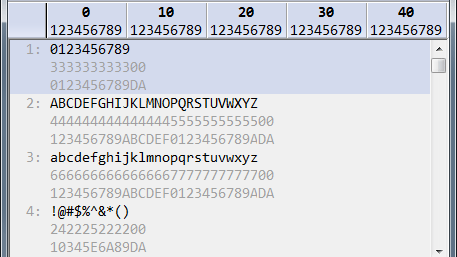

| < Previous | Next > |



The 2 lines need to be read vertically. That is, the first line contains the first nibble (4 bits) of the character and the second line contains the second nibble.
In the example below, the first character in line 1 is ZERO, which is 30 in hex. Therefore, the first character on the line after is 3 and the first character on the next line is 0.

| < Previous | Next > |